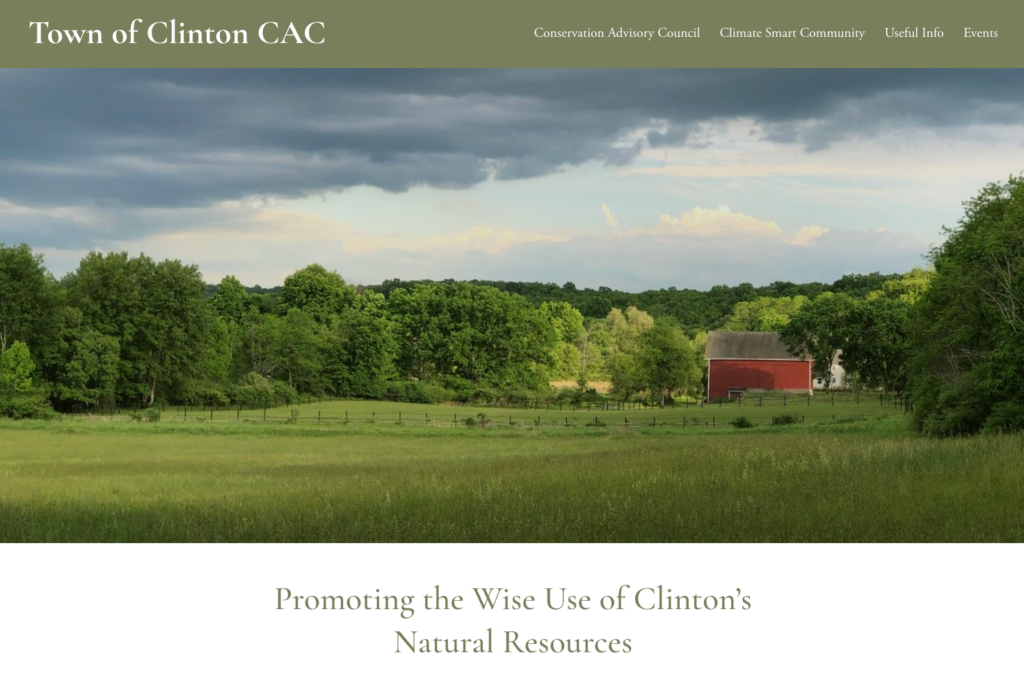Conservation Advisory Council
Regular Meeting Schedule:
The CAC meets on the second Wednesday of each month at 5:30pm on the 3rd Floor in the Masonic Hall in the Town Complex.
The Conservation Advisory Council (CAC) is a group of volunteers dedicated to the quality of Clinton’s natural environment.
The role of the CAC is to advise the Town Board, the Planning Board and The Zoning Board of Appeals on matters related to the natural environment. By providing a scientific perspective on land-use planning and decision-making, the CAC promotes wise use of the town’s natural resources and contributes to the conservation and improvement of the local environment and quality of life.
Membership draws interested citizens with diverse talents and expertise from across the community who are committed to preserving the quality of Clinton’s environment and helping residents make informed choices about their land.
In addition to its municipal advisory role, the CAC provides in-person and online education for the community; coordinates and supports studies, surveys, and inventories of natural and manmade features; and maintains a current inventory of maps and file data for natural resources, open space, wetlands, and land use.
To learn more, visit the Town of Clinton CAC website.
The CAC is composed of 3 to 9 residents. Staggered terms, even number of two-year terms, the others one-year terms. Of the members, one chairperson for a one-year term, appointed by the Town Board.
CAC Members:
- Barbara Mansell, Chairperson
Term: 1/1/2024 to 12/31/2024
Member Term: 1/1/2023 to 12/31/2024
Contact: cac@townofclinton.com - Mady Goldstein
Term: 1/1/2024 to 12/31/2025 - Vacant
Term: 1/1/2024 to 12/31/2025 - Jean McAvoy
Term: 1/1/2023 to 12/31/2024 - Margaret Pierpont
Term: 1/1/2023 to 12/31/2024 - Lynne Morrell
Term: 1/1/2023 to 12/31/2024 - Joe Phelan
Term: 1/1/2023 to 12/31/2024 - Jenn Brown
Term: 1/1/24-12/31/2025 - Deborah Valchar
Term: 1/1/2024 to 12/31/2025
Katherine Mustello, Town Board Liaison
Agendas & Minutes
What is the Natural Resources Inventory?
The Natural Resources Inventory (NRI) provides an important foundation for planners and decision-makers for many planning groups, including Towns. They can provide a basis for proactive planning and policies that consider community priorities like habitat connectivity, source water protection, and scenic views.
The NRI compiles and describes important, naturally occurring resources within a given locality (e.g., municipality, watershed, or region). Cultural resources, such as historic, scenic, and recreational resources, are often included in an NRI, as well. The inventory has two basic purposes: 1) to provide the building blocks for comprehensive land-use and conservation planning, and 2) to allow natural resource information to be included in local planning and zoning.

